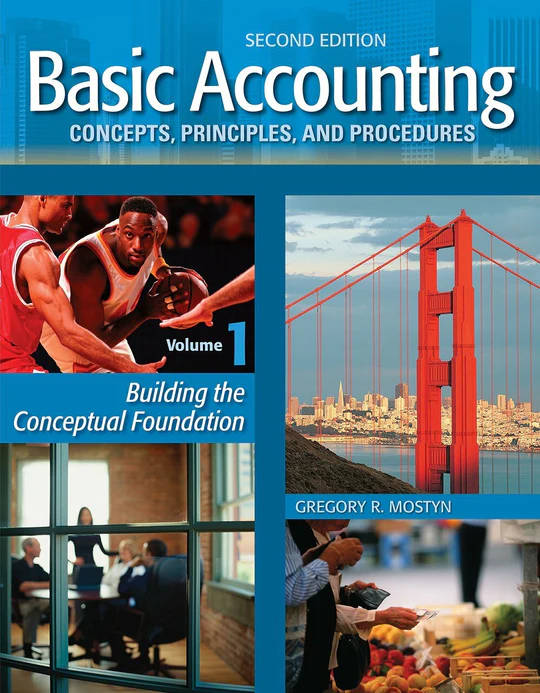Basic Accounting
Concepts, Principles, and
Procedures Volume 1
Recognition of Basic Accounting Concepts, Principles, and Procedures
Awards (category)
USA Book News (Education and Business Reference), Axiom Business Book Awards (Accounting & Taxes), Benjamin Franklin Book Awards (Professional Reference), Hoffer Independent Book Awards (Business)
Reviews
"...written in a simple clear manner for both slow and fast learners to follow. A step-by-step building-block is used where one topic fluently builds to the next to ensure an incremental learning approach." — Issues in Accounting Education: American Accounting Association
"...economical and understandable...clear explanations and comprehensive content" "Recommended" — Choice Reviews : the academic division of the American Library Association
"Comprehensive, graphically pleasing, and expertly constructed. The author explains all concepts in detail, uses a simple, informal style, and enhances the text with many images...the book succeeds almost to the extent of replacing the need for a live instructor."
— Kirkus Reviews
Volume 1 of Basic Accounting Concepts, Principles, and Procedures, ensures that the reader develops a solid comprehension of the two most important concepts necessary to learn accounting:
The book provides discussion, illustration, and practice in these two key areas that far exceed any other introductory accounting book. The great benefits of this approach are that the reader develops the ability to easily and confidently analyze new or unfamiliar events without using debits or credits. Following this, the reader then learns the essential framework of accounting concepts.
After this foundation has been established, the reader is slowly introduced to the basic debit and credit recording system, which feels simple and intuitive because of the previous practice. The reader is then introduced to the four required financial statements at an elementary level.
Volume 1 concludes with an extended introduction and discussion of the corporate concept, corporate formation, corporate transactions and financial statements, comprehensive financial statement analysis, and partnerships.
Although it is not necessary for the reader to cover corporate concepts to continue to Volume 2, the inclusion of corporate content in Volume 1 makes this book an ideal single text for the student or manager who only wants to acquire an understanding of essential accounting concepts and relate them to the corporate entity. This avoids the detailed accounting principles and procedures presented in Volume 2, which apply to completing the accounting cycle, recording major asset types, internal control, recording payroll transactions, and performing financial statements and ratio analysis.
Volume 1 Bonus content:
Essential Math for Accounting (Part 1):
Content begins at the most basic level and includes arithmetic operations, decimals, percentages, signed number calculations, and an introduction to algebra and equations. All topics have extensive problems with solutions.


